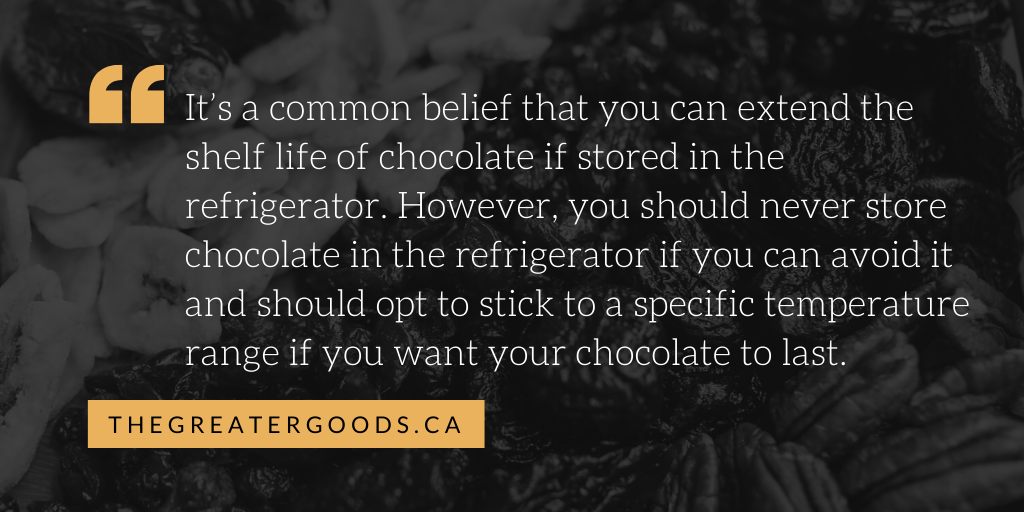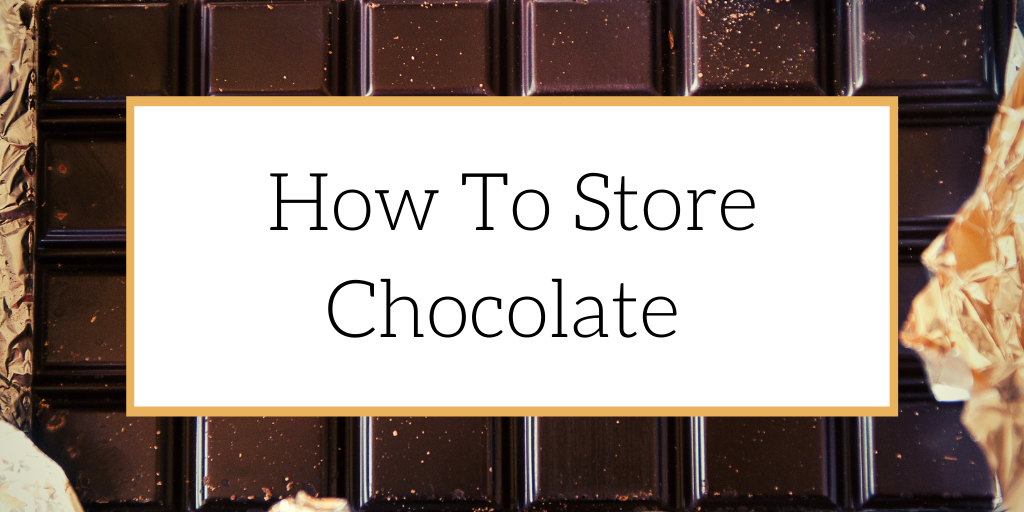Chocolate is one of the most well loved treats out there and is an incredibly popular ingredient to use in recipes. This is why keeping it in the pantry as a baking staple is an absolute must. But while chocolate has a relatively long shelf life, it can spoil before you’ve even gotten a chance to use it. This is most often due to chocolate that has not been stored properly, especially if it’s been exposed to heat, leaving you in a pinch when you needed it most. In this article, we take a look at how to maximize the shelf life of your chocolate supply, so you can make sure it’s ready to go the next time a wave of inspiration hits.
How Best to Store Chocolate

It’s a common belief that you can extend the shelf life of chocolate if stored in the refrigerator. However, you should never store chocolate in the refrigerator if you can avoid it and should opt to stick to a specific temperature range if you want your chocolate to last.
The Spruce Eats tells us exactly how chocolate should be stored to increase its shelf life potential:
“Ideally, chocolate should be stored in a slightly cool, dry, dark place, preferably a consistent 60 to 70 F. It’s also best for chocolate to be stored somewhere with less than 50 percent humidity to avoid any risk of condensation, as water can cause chocolate to spoil. One lesser-known danger is strong odors, as chocolate can absorb the odor and therefore some of the flavors of other foods.”
Store Previously Opened Chocolate Carefully
There may be some cases in which you have no choice but to store your chocolate in the refrigerator – and a lack of air conditioning in hot weather is one of the top reasons. And unfortunately, when using a previously open package of chocolate, the risk of flavor contamination from your refrigerator runs even higher.
Lindt Excellence explains how you should best use previously open packages or bars of chocolate if stored in the refrigerator:
“The fat content in chocolate causes it to take on other flavours (like foods in the refrigerator) if not sealed properly. It’s best to take out only the amounts you want to use and eat. If you do have to store it in the refrigerator, use a resealable plastic bag and then allow it to come to room temperature before using. Avoid freezing your chocolate.”
If You Need To Store it Longer
Say that you’ve purchased more chocolate than you feel like you’ll be able to use in the foreseeable future or you no longer plan on using it for what you had in mind. Chocolate can in fact be frozen if careful consideration is taken to ensure that it’s integrity is not compromised and can be stored for up to a year.
Lake Champion Chocolates tells us how you can extend the shelf life of your chocolate by freezing it under the right circumstances:
“For durations of six months to a year, the freezer can be your friend. Follow the instructions above for placing your chocolates in the refrigerator. Once a full 24 hours have gone by, move the container from the fridge to your freezer (this avoids temperature shock, and helps preserve texture). To remove from the freezer — just reverse the steps. Move from freezer to fridge, wait a full 24 hours, remove from the fridge, and let come to room temperature before you finally unwrap them. (Always eat your chocolate at room temperature, especially truffles!).”
Here at The Greater Goods, we offer consultation services for your business, from food production to distribution. If you’re looking for advice on how to get up and running, we offer a free consultation with our expert food industry consultants and food brokers.
